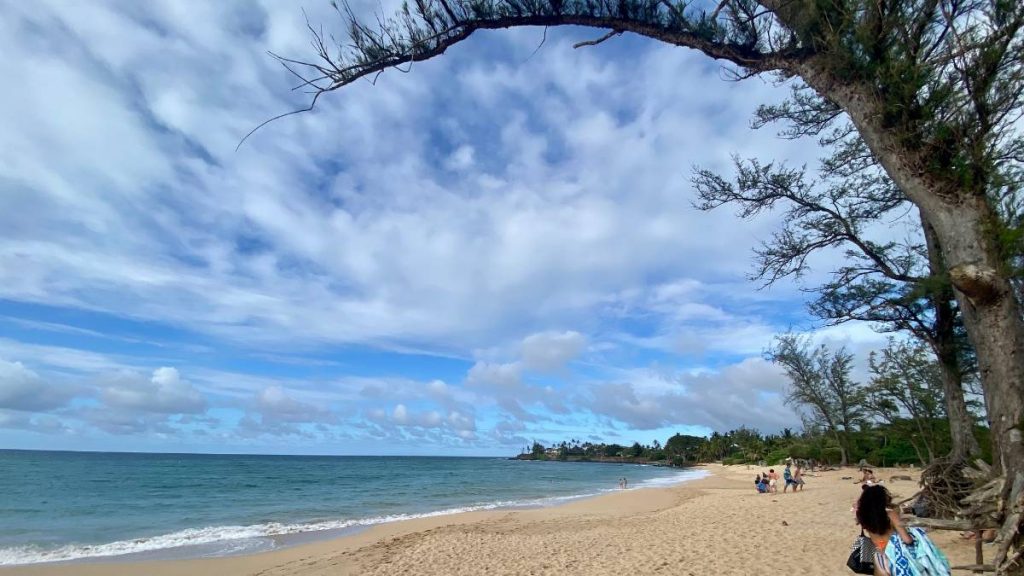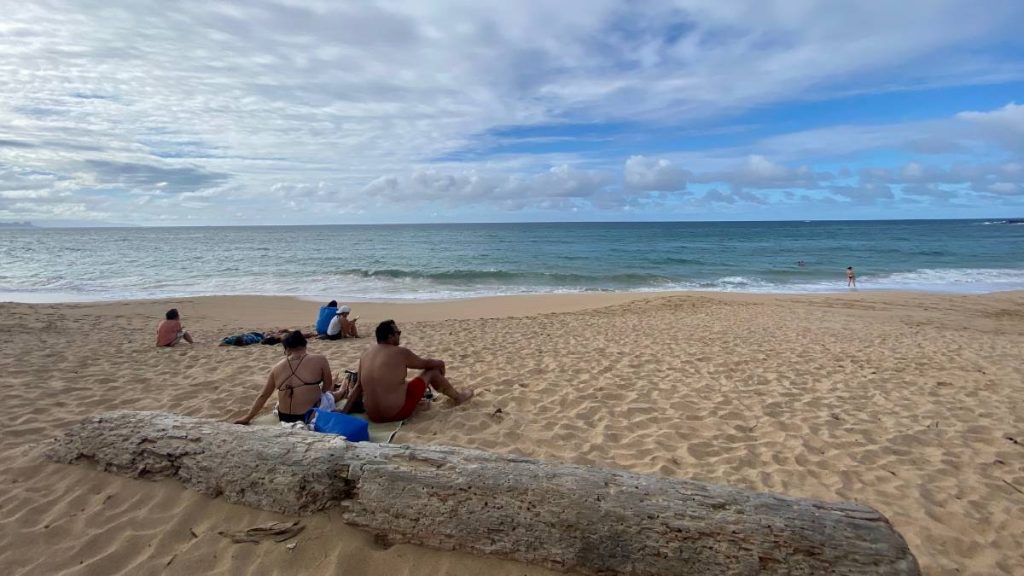Pāʻia Bay shark attack victim leaves hospital; Maui ocean official sheds light on incident


Pāʻia Bay was calm late Friday afternoon, nearly one week after a shark bit off a woman’s left arm and part of her right hand.
A handful of people were lounging on the beach, and adults at the busy Pāʻia Youth and Cultural Center were still talking about the incident.
The shark attack victim, a 51-year-old visitor from France, was discharged from the hospital Wednesday, a hospital spokeswoman told Maui Now. No other details were provided about her identity, condition or whereabouts.
Although state Department of Land and Natural Resources makes the call on the shark species responsible for attacks, Maui Fire Department Ocean Safety Operations Manager Cary Kayama said the shark had to be large.
“I would assume it would be one tiger, because I can’t see a reef shark taking a whole arm off,” he told Maui Now on Friday.
The longtime waterman said patrols didn’t detect anything specific last Saturday or in the days that followed. However, a friend who was diving off a boat told Kayama that a 12-foot tiger shark was spotted on the nearby outer reef earlier Saturday.
“It could be coincidence,” he said.
Last Saturday, Kayama was at a nearby Pāʻia beach filling in for one of his captains when the radio report came through. A bystander had called 9-1-1 around 4:10 p.m. after hearing a woman screaming and seeing blood in the water.
Typically if a shark victim is still in the water, a jet ski is dispatched right away, Kayama said. But because the woman was so close to the beach and people went in to help get to shore, jet skis instead were sent out to patrol the water for the shark.
Despite various reports on distance, Kayama said he believes the attack occurred around 40 to 60 feet from shore where the woman was said to have been swimming with fins.
“She was pretty close to shore,” he said.
Maui fire, police and medics arrived on scene quickly, and officials applied a tourniquet near her left shoulder. Much of her right hand was missing and pressure was applied to stop the bleeding. A witness also described the injuries in a Hawai’i News Now report.
Kayama said there was nothing that stood out about this particular shark incident, and sharks are known hunters that move around a lot.
Pāʻia Bay, a popular north shore beach for visitors, bodyboarders and surfers, wasn’t busy with surfers that day, the youth center was closed and there was no rain or runoff in the water.
“The water’s always murky there, so it’s not the best beach to swim, but a lot of people go there,” Kayama said.
There have been about 61 shark incidents in waters off Maui since 1995, and seven in the Pāʻia area dating back to 2005, according to the DLNR Division of Aquatic Resources Shark Incidents list, which compiles details about encounters where sharks bite humans or boards.
The last deadly shark incident was in 2020, when a 56-year-old man was attacked while surfing Honolua Bay.
Pāʻia Bay has two previous incidents recorded. In 2013, a requiem shark about 6 feet in length bit the rail of a foam surfboard 75 yards from shore. In 2014, a swimmer about 250 yards from shore suffered lacerations to the left foot from a requiem shark about 6 to 7 feet in length.
“Requiem shark” is used to indicate a member of the family Carcharhinidae that cannot be identified with certainty, but tiger shark can be excluded, according to Division of Aquatic Resources. Examples of requiem sharks other than tiger sharks include gray reef, Galapagos, blacktip, blacktip reef, whitetip reef and sandbar.
When asked for analysis of last week’s Pāʻia Bay incident, DLNR spokesman Dan Dennison said, “no one from DLNR has interviewed the woman involved in the encounter on Saturday. We are not doing any interviews on this incident at this time.”
The Division of Aquatic Resources website said there is an increased risk of being bitten by a shark during certain months, in particular October through December.
“Early Hawaiians recognized this, and cautioned against going in the water at that time,” the division said. “Although fewer people are in the water from Nov-Dec, some of Hawaii’s most serious shark attacks took place during those months.”
Ahead of those higher-risk months, Kayama said that basic shark safety tips include avoiding morning and evening hours when some sharks are known to come inshore and feed. Also, murky water or harbor entrances, and areas near stream mouths, especially after heavy rain, is known to be frequented by sharks.
Other shark safety tips can be found on the Division of Aquatic Resources website.









